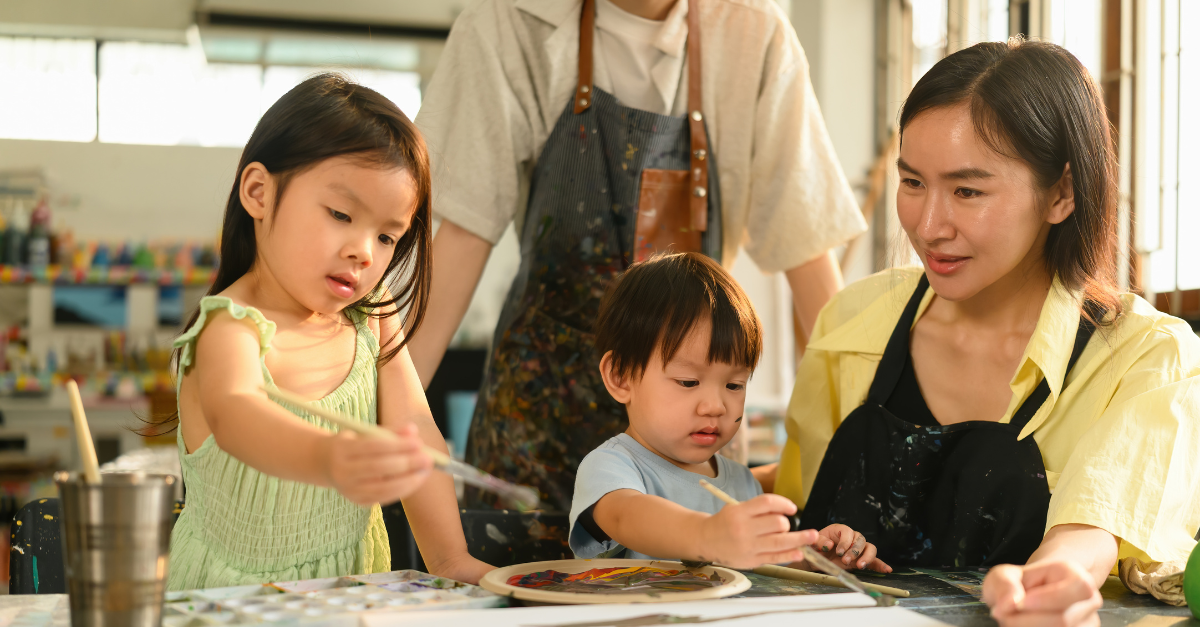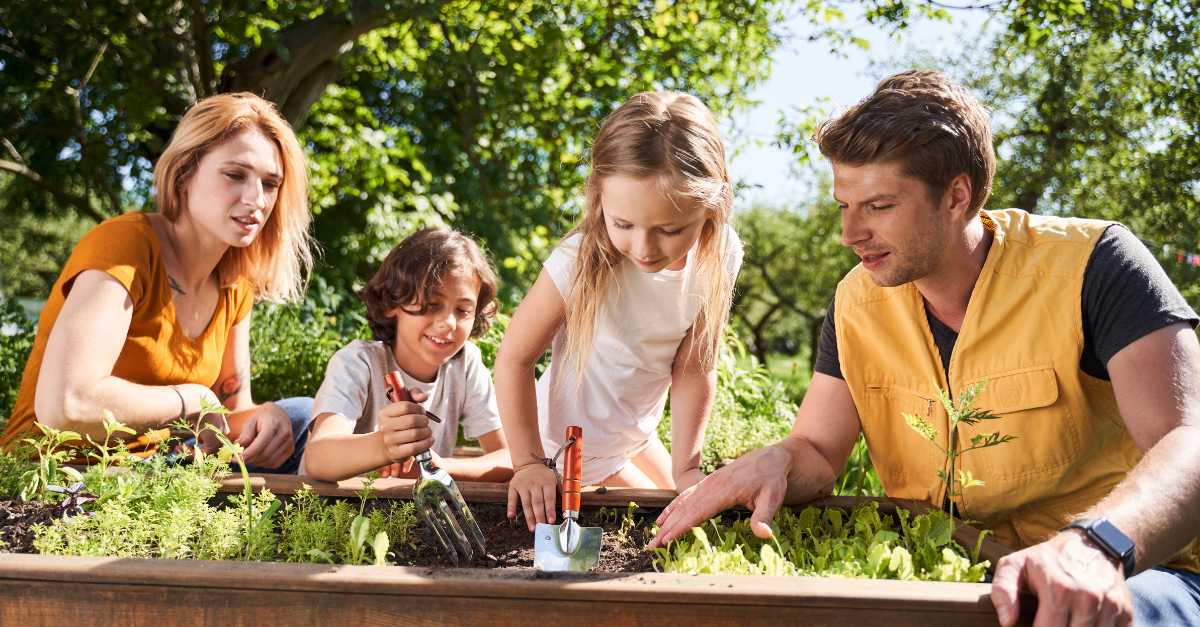Choosing the right early childhood education approach can feel like browsing a menu with too many excellent options—you want to make the right choice, but every method claims to be “the best.”
The truth? There is no one-size-fits-all model. Children learn in beautifully diverse ways, and different philosophies support different strengths, temperaments, and family values.
This guide breaks down the most well-known early childhood approaches—Waldorf, Montessori, Reggio Emilia, play-based, emergent, project-based, academic-based, and a few others worth knowing—so you can confidently decide what aligns with your child and your parenting style. Think of this as your friendly, research-backed decoder ring for preschool lingo.
Why Early Childhood Approaches Matter
From birth to age 6, children’s brains form more than a million neural connections per second. The environment, relationships, and opportunities they’re exposed to play a major role in developing skills like curiosity, confidence, executive function, and emotional regulation.
Different education frameworks emphasize different pieces of this developmental puzzle—some focus on creativity, others on independence, others on foundational academics or collaborative learning. Understanding the core philosophy behind each method helps you choose a setting where your child can truly thrive.
1. Waldorf Education
Words you might hear associated: holistic learning, imaginative play, screen-free early childhood education
Basic Philosophy:
Founded by Rudolf Steiner, Waldorf education emphasizes whole-child development—head, heart, and hands. Expect a warm, predictable rhythm, a focus on imagination, and minimal early technology.
What It Looks Like:
- Lots of storytelling, nature walks, seasonal activities, and handwork (like finger knitting or baking).
- Teachers often stay with the same class for multiple years.
- Classrooms use natural materials—silks, wood toys, and handmade items.
Best For: Families who value creativity, slow childhood moments, and a gentler, screen-free pace.
Potential Drawbacks:
- Limited early academics, which may feel “too relaxed” for families seeking structured learning.
- Can be difficult to find in some areas of the country.
2. Montessori Education
Words you might hear associated: child-led learning, practical life activities, mixed-age classrooms
Basic Philosophy:
Developed by Dr. Maria Montessori, this model emphasizes independence, sensory exploration, and respect for the child’s natural developmental timeline.
- Child-sized furniture, open shelves, and specialized, kid-friendly materials.
- Mixed-age classrooms (typically 3–6).
- Children choose their activities and work at their own pace (“follow the child”).
Best For:
Kids who thrive with hands-on learning, order, routine, and independence; parents who appreciate self-directed exploration.
Potential Drawbacks:
- A very specific teaching methodology—quality varies widely outside certified programs.
- Less emphasis on pretend play than other approaches.

3. Reggio Emilia Approach
Words you might hear associated: atelier, child-centered learning, project work
Basic Philosophy:
Originating in Reggio Emilia, Italy, this approach views children as capable, curious learners. Teachers act as co-researchers, and the environment itself (“the third teacher”) plays a huge role.
What It Looks Like:
- Deep, long-term projects inspired by children’s questions.
- Classrooms filled with natural light, plants, and beautiful materials.
- Daily documentation of learning—photos, quotes, learning stories.
Best For:
Kids who love collaboration, creativity, and open-ended exploration.
Potential Drawbacks:
- Not a standardized program, so implementation varies.
- May feel too unstructured for some families.
4. Play-Based Learning
Words you might hear associated: play-based school, child-directed play, social-emotional learning, developmental preschool
Basic Philosophy:
Play is children’s “work.” Through play—dramatic, constructive, physical, sensory, and social—children learn problem-solving, language, creativity, and emotional skills that form the foundation for academic success.
What It Looks Like:
- Lots of free play alongside thoughtfully designed centers (blocks, art, dramatic play, STEM tables).
- Teachers guide rather than direct, stepping in to scaffold learning.
Best For:
Almost all children—especially toddlers and preschoolers who learn best through movement, imagination, and social play.
Potential Drawbacks:
- Parents sometimes misunderstand it as “just play,” and redirect, even though it’s deeply intentional.
- May feel light on formal academics.
5. Emergent Curriculum
Words you might hear associated: inquiry-based learning, responsive teaching, child-led preschool
Basic Philosophy:
Teachers design learning experiences based on children’s evolving interests—think of it as a dynamic curriculum rather than a pre-planned one. Inspired by (and very related to) the Reggio Emilia method!
What It Looks Like:
- If kids become fascinated by construction, the curriculum might expand into building, architecture, shapes, mathematics, and storytelling.
- Teachers observe, ask questions, and provide materials that deepen the learning.
Best For:
Children who ask constant questions, have strong interests, or thrive when they feel ownership in their learning.
Potential Drawbacks:
- Requires very skilled teachers to execute well.
- Some parents prefer a predictable curriculum.
6. Project-Based Learning (PBL)
Words you might hear associated: project-based preschool, inquiry learning, collaborative projects
Basic Philosophy:
PBL centers on extended, meaningful projects where children investigate real topics and produce something to share—like a garden, a mural, a play, or a science experiment.
What It Looks Like:
- Group investigations lasting days or weeks.
- Teachers support planning, research, problem-solving, and reflection.
Best For:
Kids who enjoy teamwork, creativity, long-term focus, and hands-on creation.
Potential Drawbacks:
- Requires consistent attendance—kids who miss several days may miss key stages of a project.
- Less predictable daily structure.

7. Academic-Based or Structured Learning
Words you might hear associated: structured school, early academics, kindergarten readiness, phonics, early math
Basic Philosophy:
A more traditional model emphasizing direct instruction in early literacy, numeracy, fine motor skills, and kindergarten readiness benchmarks.
What It Looks Like:
- Circle time, worksheets (in some programs), teacher-led lessons.
- Emphasis on letter recognition, counting, handwriting, and early reading.
Best For:
Families wanting a more familiar school-like structure, or children who crave clear routines and predictable expectations.
Potential Drawbacks:
- Can feel restrictive for children who learn best through play.
- Not ideal for very young preschoolers or kids who need movement-based learning.
Other Approaches Worth Knowing
Forest or Outdoor Schools
Words you might hear associated: outdoor learning, nature-based education
Kids spend most of the day outdoors year-round in Forest Schools. Great for sensory development, physical freedom, resilience, and a love of nature.
STEAM-Focused Programs
Words you might hear associated: STEM
These programs emphasize science, technology, engineering, arts, and math through age-appropriate inquiry and experimentation.
Bilingual or Language-Immersion Preschools
Words you might hear associated: bilingual school, dual-language learning
Children learn in two languages from an early age, supporting cognitive flexibility and future fluency in this method.
How to Choose the Best Approach for Your Child
1. Consider your child’s temperament
- Independent or collaborative?
- Highly active or more reflective?
- Loves structure or thrives on flexibility?
2. Reflect on your family values
Do you prioritize creativity, independence, early academics, nature, or social skills?
3. Visit classrooms
Even within the same approach, programs vary widely. Trust what you see and what you feel.
4. Ask teachers thoughtful questions
- How do you guide conflict resolution?
- How do you communicate with families?
- How do you support children who struggle or excel?
5. Choose the environment where your child appears most comfortable
When a child feels safe and understood, learning naturally follows.
Final Thoughts
There is no single “best” early childhood education approach—only the one that fits your child’s development and your family’s values.
Whether you’re drawn to the structure of Montessori, the creativity of Waldorf, the collaboration of Reggio Emilia, or the joyful chaos of play-based learning, the most important factor is the relationship between your child, their teachers, and the environment.
Your child’s early years are about building confidence, curiosity, and a love of learning—not racing toward milestones. With knowledge, trust, and a little intuition, you’ll make the choice that’s right for your family.

.webp)

.webp)
.webp)
.webp)


.png)


.png)
.png)